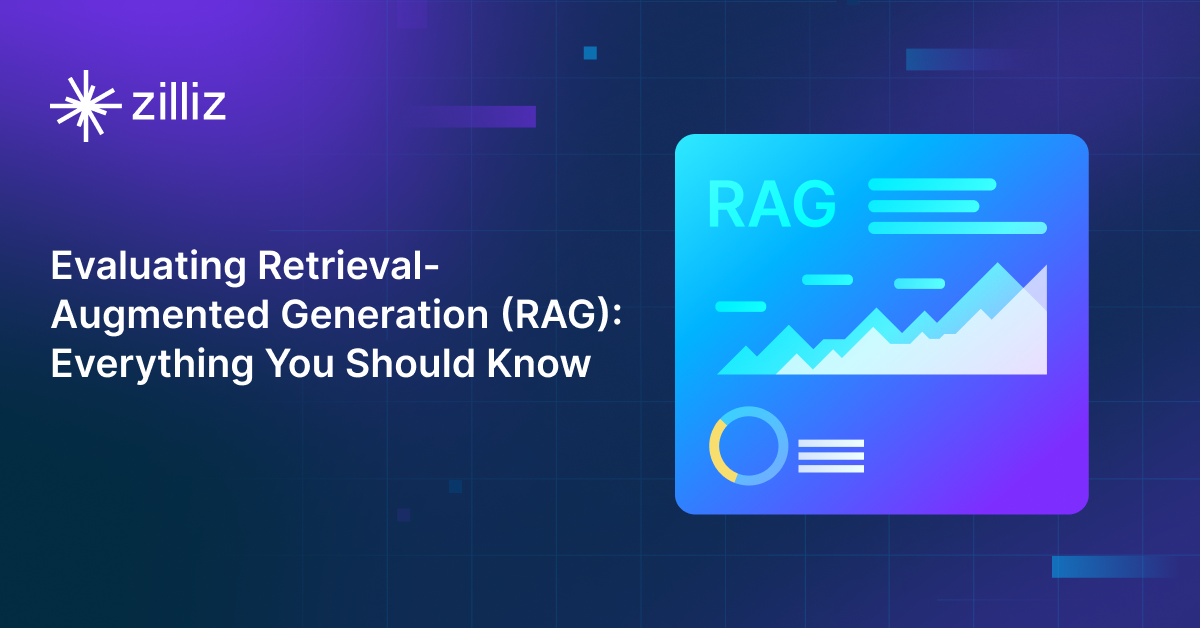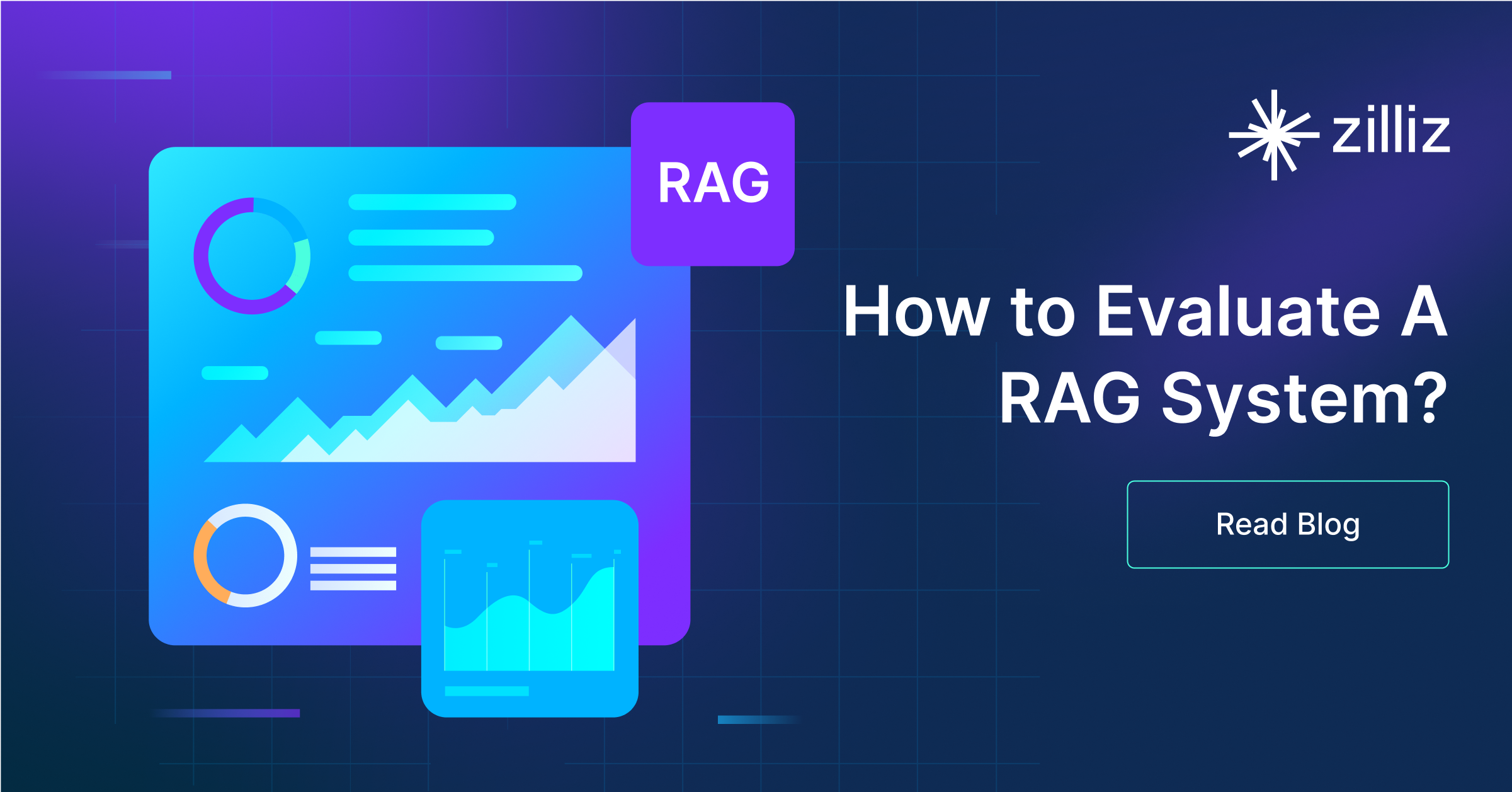Build RAG Chatbot with LangChain, OpenSearch, AWS Bedrock Claude 3.5 Sonnet, and Ollama snowflake-arctic-embed
Introduction to RAG
Retrieval-Augmented Generation (RAG) is a game-changer for GenAI applications, especially in conversational AI. It combines the power of pre-trained large language models (LLMs) like OpenAI’s GPT with external knowledge sources stored in vector databases such as Milvus and Zilliz Cloud, allowing for more accurate, contextually relevant, and up-to-date response generation. A RAG pipeline usually consists of four basic components: a vector database, an embedding model, an LLM, and a framework.
Key Components We'll Use for This RAG Chatbot
This tutorial shows you how to build a simple RAG chatbot in Python using the following components:
- LangChain: An open-source framework that helps you orchestrate the interaction between LLMs, vector stores, embedding models, etc, making it easier to integrate a RAG pipeline.
- OpenSearch: An open-source search and analytics suite derived from Elasticsearch. It offers robust full-text search and real-time analytics, with vector search available as an add-on for similarity-based queries, extending its capabilities to handle high-dimensional data. Since it is just a vector search add-on rather than a purpose-built vector database, it lacks scalability and availability and many other advanced features required by enterprise-level applications. Therefore, if you prefer a much more scalable solution or hate to manage your own infrastructure, we recommend using Zilliz Cloud, which is a fully managed vector database service built on the open-source Milvus and offers a free tier supporting up to 1 million vectors.)
- AWS Bedrock Claude 3.5 Sonnet: This model combines the advanced language processing abilities of Claude 3.5 with AWS's scalable infrastructure, offering enhanced performance for complex text generation tasks. Its strengths lie in versatility and resilience, making it ideal for applications in creative writing, customer support automation, and interactive content generation.
- Ollama Snowflake-Arctic-Embed: This model specializes in generating high-dimensional embeddings for structured and unstructured data, leveraging advanced deep learning techniques. Its strengths include efficient handling of large datasets and producing contextual representations, making it ideal for applications in recommendation systems, semantic search, and personalized content delivery.
By the end of this tutorial, you’ll have a functional chatbot capable of answering questions based on a custom knowledge base.
Note: Since we may use proprietary models in our tutorials, make sure you have the required API key beforehand.
Step 1: Install and Set Up LangChain
%pip install --quiet --upgrade langchain-text-splitters langchain-community langgraph
Step 2: Install and Set Up AWS Bedrock Claude 3.5 Sonnet
pip install -qU "langchain[aws]"
# Ensure your AWS credentials are configured
from langchain.chat_models import init_chat_model
llm = init_chat_model("anthropic.claude-3-5-sonnet-20241022-v2:0", model_provider="bedrock_converse")
Step 3: Install and Set Up Ollama snowflake-arctic-embed
pip install -qU langchain-ollama
from langchain_ollama import OllamaEmbeddings
embeddings = OllamaEmbeddings(model="snowflake-arctic-embed")
Step 4: Install and Set Up OpenSearch
pip install --upgrade --quiet opensearch-py langchain-community
from langchain_community.vectorstores import OpenSearchVectorSearch
opensearch_vector_search = OpenSearchVectorSearch(
"http://localhost:9200",
"embeddings",
embedding_function
)
Step 5: Build a RAG Chatbot
Now that you’ve set up all components, let’s start to build a simple chatbot. We’ll use the Milvus introduction doc as a private knowledge base. You can replace it with your own dataset to customize your RAG chatbot.
import bs4
from langchain import hub
from langchain_community.document_loaders import WebBaseLoader
from langchain_core.documents import Document
from langchain_text_splitters import RecursiveCharacterTextSplitter
from langgraph.graph import START, StateGraph
from typing_extensions import List, TypedDict
# Load and chunk contents of the blog
loader = WebBaseLoader(
web_paths=("https://milvus.io/docs/overview.md",),
bs_kwargs=dict(
parse_only=bs4.SoupStrainer(
class_=("doc-style doc-post-content")
)
),
)
docs = loader.load()
text_splitter = RecursiveCharacterTextSplitter(chunk_size=1000, chunk_overlap=200)
all_splits = text_splitter.split_documents(docs)
# Index chunks
_ = vector_store.add_documents(documents=all_splits)
# Define prompt for question-answering
prompt = hub.pull("rlm/rag-prompt")
# Define state for application
class State(TypedDict):
question: str
context: List[Document]
answer: str
# Define application steps
def retrieve(state: State):
retrieved_docs = vector_store.similarity_search(state["question"])
return {"context": retrieved_docs}
def generate(state: State):
docs_content = "\n\n".join(doc.page_content for doc in state["context"])
messages = prompt.invoke({"question": state["question"], "context": docs_content})
response = llm.invoke(messages)
return {"answer": response.content}
# Compile application and test
graph_builder = StateGraph(State).add_sequence([retrieve, generate])
graph_builder.add_edge(START, "retrieve")
graph = graph_builder.compile()
Test the Chatbot
Yeah! You've built your own chatbot. Let's ask the chatbot a question.
response = graph.invoke({"question": "What data types does Milvus support?"})
print(response["answer"])
Example Output
Milvus supports various data types including sparse vectors, binary vectors, JSON, and arrays. Additionally, it handles common numerical and character types, making it versatile for different data modeling needs. This allows users to manage unstructured or multi-modal data efficiently.
Optimization Tips
As you build your RAG system, optimization is key to ensuring peak performance and efficiency. While setting up the components is an essential first step, fine-tuning each one will help you create a solution that works even better and scales seamlessly. In this section, we’ll share some practical tips for optimizing all these components, giving you the edge to build smarter, faster, and more responsive RAG applications.
LangChain optimization tips
To optimize LangChain, focus on minimizing redundant operations in your workflow by structuring your chains and agents efficiently. Use caching to avoid repeated computations, speeding up your system, and experiment with modular design to ensure that components like models or databases can be easily swapped out. This will provide both flexibility and efficiency, allowing you to quickly scale your system without unnecessary delays or complications.
OpenSearch optimization tips
To optimize OpenSearch in a Retrieval-Augmented Generation (RAG) setup, fine-tune indexing by enabling efficient mappings and reducing unnecessary stored fields. Use HNSW for vector search to speed up similarity queries while balancing recall and latency with appropriate ef_search and ef_construction values. Leverage shard and replica settings to distribute load effectively, and enable caching for frequent queries. Optimize text-based retrieval with BM25 tuning and custom analyzers for better relevance. Regularly monitor cluster health, index size, and query performance using OpenSearch Dashboards and adjust configurations accordingly.
AWS Bedrock Claude 3.5 Sonnet optimization tips
Claude 3.5 Sonnet in AWS Bedrock delivers an improved balance of efficiency and reasoning. Optimize retrieval by incorporating reranking techniques that prioritize the most contextually relevant documents. Keep prompts structured and avoid unnecessary details to prevent context window saturation. Use temperature values between 0.1 and 0.3 for factual responses, fine-tuning top-p and top-k as needed. Cache frequently accessed data to reduce redundant API calls and lower operational costs. Leverage AWS Bedrock’s elastic scaling to handle demand spikes while maintaining performance. If used with Claude 3.5 Opus, delegate more complex reasoning tasks to Opus while Sonnet handles general-purpose queries.
Ollama snowflake-arctic-embed optimization tips
To optimize the Ollama snowflake-arctic-embed component in your Retrieval-Augmented Generation setup, ensure that you fine-tune the embedding model on domain-specific data to improve relevance and accuracy. Utilize a caching mechanism for frequently accessed embeddings to reduce computation time. Experiment with different embedding dimensions to balance performance and resource usage, and implement vector quantization techniques to save memory space without significantly impacting quality. Additionally, regularly monitor the performance metrics and adjust your hyperparameters accordingly to achieve the best outcomes in your retrieval tasks.
By implementing these tips across your components, you'll be able to enhance the performance and functionality of your RAG system, ensuring it’s optimized for both speed and accuracy. Keep testing, iterating, and refining your setup to stay ahead in the ever-evolving world of AI development.
RAG Cost Calculator: A Free Tool to Calculate Your Cost in Seconds
Estimating the cost of a Retrieval-Augmented Generation (RAG) pipeline involves analyzing expenses across vector storage, compute resources, and API usage. Key cost drivers include vector database queries, embedding generation, and LLM inference.
RAG Cost Calculator is a free tool that quickly estimates the cost of building a RAG pipeline, including chunking, embedding, vector storage/search, and LLM generation. It also helps you identify cost-saving opportunities and achieve up to 10x cost reduction on vector databases with the serverless option.
 Calculate your RAG cost
Calculate your RAG cost
What Have You Learned?
By diving into this tutorial, you’ve unlocked the power of building a sophisticated RAG system from the ground up! You learned how LangChain acts as the brain of the operation, seamlessly orchestrating the flow between components. With OpenSearch as your vector database, you now know how to store and retrieve context-rich embeddings efficiently, ensuring lightning-fast similarity searches. AWS Bedrock’s Claude 3.5 Sonnet stepped in as your LLM powerhouse, generating human-like responses by synthesizing retrieved knowledge and user queries—all while balancing speed and accuracy. And let’s not forget Ollama’s Snowflake-Arctic-Embed model, which transformed raw text into meaningful vectors, bridging the gap between unstructured data and machine-understandable formats. Together, these tools created a dynamic pipeline where retrieval and generation work hand-in-hand to deliver precise, context-aware answers.
But wait—there’s more! You also picked up pro tips for optimizing your RAG system, like tweaking chunk sizes for better performance and using metadata filtering to refine results. The free RAG cost calculator introduced here is your secret weapon for balancing budget and functionality as you scale. Now that you’ve seen how these pieces fit together, imagine the possibilities: custom chatbots, research assistants, or even AI-powered knowledge bases tailored to your needs. The tools are in your hands, the foundation is built, and the future is wide open. So go ahead—experiment, iterate, and innovate. Your next breakthrough RAG application is just a few lines of code away. Let’s build something amazing! 🚀
Further Resources
🌟 In addition to this RAG tutorial, unleash your full potential with these incredible resources to level up your RAG skills.
- How to Build a Multimodal RAG | Documentation
- How to Enhance the Performance of Your RAG Pipeline
- Graph RAG with Milvus | Documentation
- How to Evaluate RAG Applications - Zilliz Learn
- Generative AI Resource Hub | Zilliz
We'd Love to Hear What You Think!
We’d love to hear your thoughts! 🌟 Leave your questions or comments below or join our vibrant Milvus Discord community to share your experiences, ask questions, or connect with thousands of AI enthusiasts. Your journey matters to us!
If you like this tutorial, show your support by giving our Milvus GitHub repo a star ⭐—it means the world to us and inspires us to keep creating! 💖
- Introduction to RAG
- Key Components We'll Use for This RAG Chatbot
- Step 1: Install and Set Up LangChain
- Step 2: Install and Set Up AWS Bedrock Claude 3.5 Sonnet
- Step 3: Install and Set Up Ollama snowflake-arctic-embed
- Step 4: Install and Set Up OpenSearch
- Step 5: Build a RAG Chatbot
- Optimization Tips
- RAG Cost Calculator: A Free Tool to Calculate Your Cost in Seconds
- What Have You Learned?
- Further Resources
- We'd Love to Hear What You Think!
Content
Vector Database at Scale
Zilliz Cloud is a fully-managed vector database built for scale, perfect for your RAG apps.
Try Zilliz Cloud for Free


